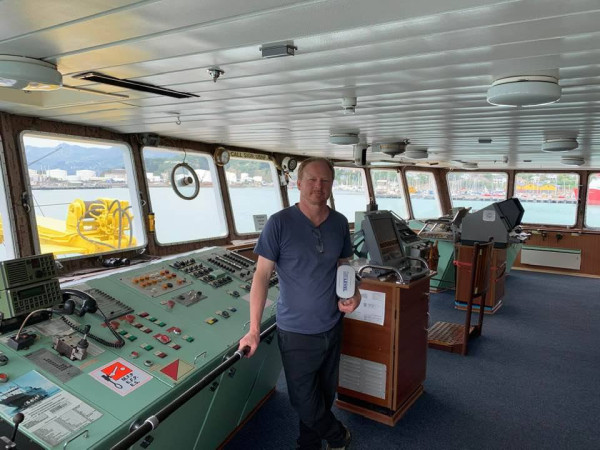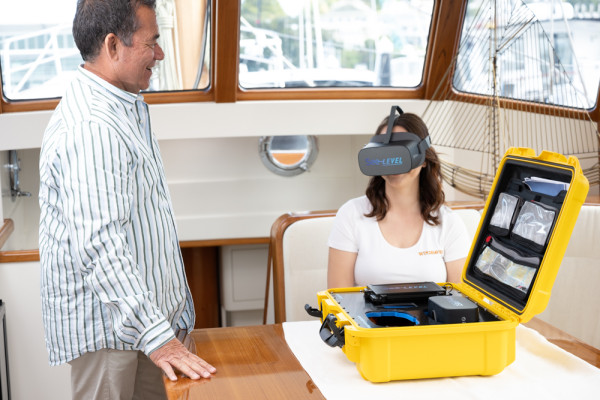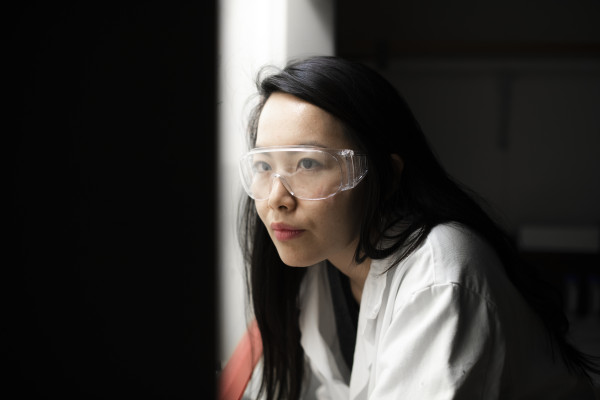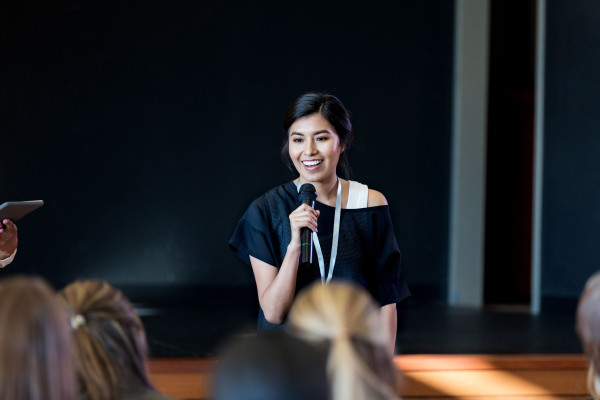With ‘cybersickness' prompting the idea to use virtual reality to relieve seasickness, See-LEVEL is now helping consumers, the Navy, engineers, you name it, world over.
At a glance
- Christchurch-based See-LEVEL has developed a virtual reality solution to alleviate seasickness.
- Callaghan Innovation has helped accelerate their R&D, especially as it was developing its first full-scale products, with a range of different support and grants, including the R&D Experience Grant.
- With COVID-19 initially interrupting See-LEVEL’s plan to target cruise ships and expeditions, bigger global opportunities have arisen with the Navy and technology providers to offshore wind farms.
That Callaghan Innovation support was incredibly important, because we were able late last year to bring on board two early-adopter customers – Heritage Expeditions and Whale Watch Kaikoura – and gain two crucial case studies.
- Dudley Jackson, Founder, See-LEVEL
A novel approach to relieving seasickness
A reported 40-70% of users experience motion sickness, or ‘cybersickness’ within 15 minutes of a virtual reality (VR) experience.
For Christchurch-based entrepreneur Dudley Jackson, who suffers from motion sickness of a different kind – seasickness – this phenomenon sparked the idea for his business, See-LEVEL.
“I thought, if VR could have such a powerful effect on the mind in causing motion sickness,” says Jackson, “what would happen if we reversed some of the headset’s engineering, and the situation where it’s used? Could it remove seasickness just as quickly?”
So, after fashioning together a basic prototype using the likes of Google Cardboard and a basic mobile app he developed, Jackson used himself as a guinea pig.
“I rowed out into a southerly storm one night to the yacht, and when I started to feel nauseous, I used this basic program I’d made and felt some benefit. That’s when I thought, ‘there’s something in this’,” says Jackson.

See-LEVEL founder Dudley Jackson’s own experience with seasickness sparked the idea for his novel innovation
A full wave of support from Callaghan Innovation
Someone else who saw potential in Jackson's prototype was Rob Lawrence, a Business Advisor at the Canterbury Employers’ Chamber of Commerce (CECC), part of Callaghan Innovation’s Regional Business Partner (RBP) network.
Lawrence was able to connect Jackson with a Callaghan Innovation Getting Started Grant to help clarify the IP position around Jackson’s idea, as well as software development and commercial contacts to help launch it.
From here, another Callaghan Innovation grant in 2019 co-funded 40% of the R&D work required for See-LEVEL to create its first full-scale product.
“That Callaghan Innovation support was incredibly important, because we were able late last year to bring on board two early-adopter customers – Heritage Expeditions and Whale Watch Kaikoura – and gain two crucial case studies,” Jackson says.
It also helped See-LEVEL learn more about how best to deploy the technology, especially when potential users have little or no experience of VR and are feeling very unwell.
Lastly, through a R&D Experience Grant, See-LEVEL will be able to use student talent to help gather more data in their bid to test out the technology’s business case.

See-LEVEL’s VR headset
A new tack and even more global potential
Initial trials of the technology proved a success. During a two-week Heritage Expeditions trip to the Antarctic Islands, 12 of the 14 passengers who reported feeling seasick recommended using the technology (the other two had pre-existing medical conditions as complicating factors).
Joris de Voch, CECC and RBP network Business Advisor, says the potential market opportunity for See-LEVEL is substantial.
“When people hear about this technology, they often think of it at the consumer level – I get seasick, you can sell it to me,” says de Vocht. “But the real value is on a commercial level – providing the technology to large companies that have big fleets and send a lot of people to sea – because of the potential productivity and health and safety gains.”
Identifying these other opportunities was basically forced upon See-LEVEL when COVID-19 arrived in New Zealand. Although initially targeting cruise and expedition ships, COVID-19 forced them to change tack with the major markets of defence (the many Navy fleets around the globe) and offshore wind farms identified.
See-LEVEL is subsequently working with a significant global technology provider in the sector to test the technology with wind turbine engineers, initially in Taiwan.
Jackson says he’s enjoying seeing how the technology is already making an impact.
“It’s really nice to see it allow people, including myself, to enjoy the sea. Having people give you back the headset and say, ‘thank you, I feel better now’ – that’s a big driver.”




